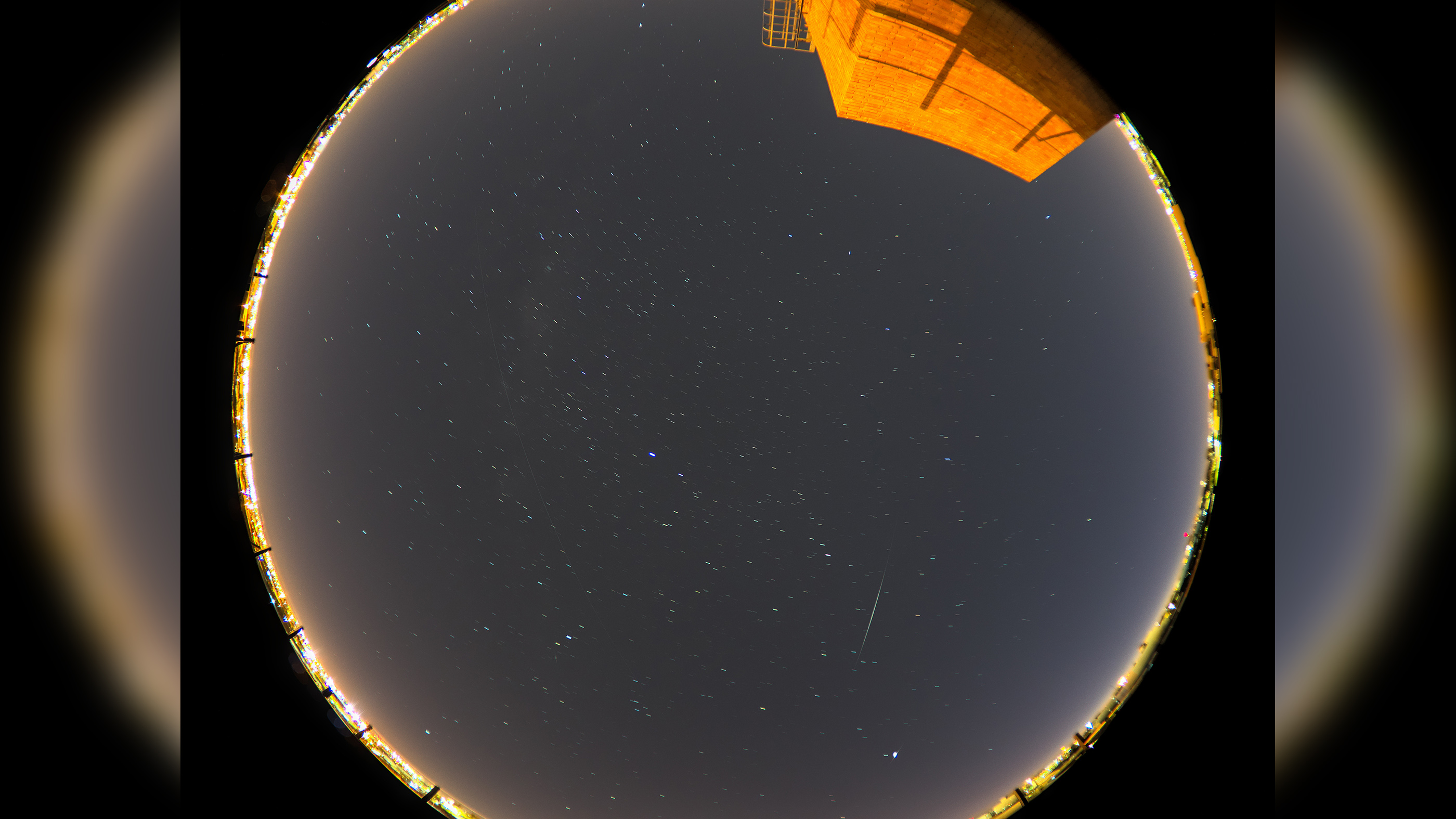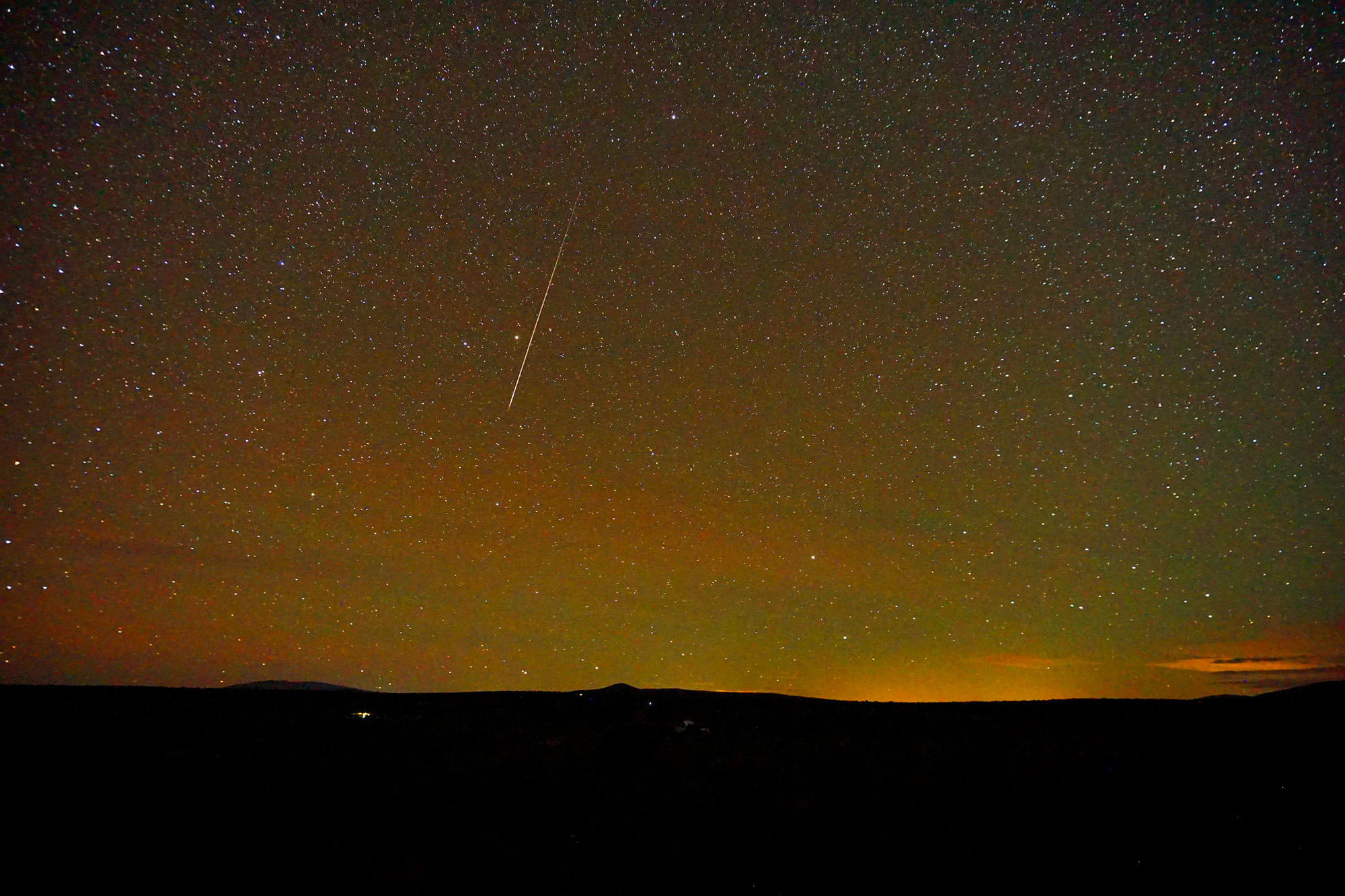How to watch the Eta Aquarids meteor shower this weekend
The show originates from Halley's Comet and may generate as many as 30 shooting stars an hour.

One of spring's busiest meteor showers, called the Eta Aquarids, is peaking this weekend. To catch the "shooting stars," just step outside and look to the southern night sky.
The Eta Aquarids reached their approximate peak Friday morning (May 6), and they will continue to put on a strong showing in the coming days, reaching as many as 30 meteors an hour. And these meteors are known for their speed, reaching some 148,000 mph (just over 238,000 km/h) as they hit our atmosphere, NASA said.
The shooting stars originate from Halley's Comet (1P/Halley), a short-period comet that swings through the inner solar system every 75 to 76 years and will next come by in about 2061. During these visits, the comet leaves behind its own calling card — a debris trail of dust grains that Earth plows through every May. The bits of debris that hit our atmosphere will burn up harmlessly before reaching the ground.
This meteor shower is best visible from the Southern Hemisphere or close to the equator, but you can still catch a glimpse of the meteors in the Northern Hemisphere, said Bill Cooke, who leads NASA's Meteoroid Environment Office at the agency's Marshall Space Flight Center in Alabama.
"It will be interesting to see if the rates are low this year, or if we will get a spike in numbers before next year's forecast outburst," Cooke said in a NASA post Wednesday (May 3).

For the best meteor viewing, go outside around 3 a.m. local time after the moon has set. While the meteors originate in the constellation Aquarius near the celestial equator, it's better to look at the sky's zenith (straight up) so that you can see as many meteors as possible.
Pick a safe location and bring a lawn chair to reduce neck strain. Move away from as many lights as possible and try to get outside at least 20 minutes before you want to go meteor-hunting, to let your eyes adjust to the dark, according to NASA. If you want to use your phone or a flashlight, apply a red filter or red tape so as not to ruin your night vision.
Sign up for the Live Science daily newsletter now
Get the world’s most fascinating discoveries delivered straight to your inbox.
Astrophotographers wanting to catch meteors should consult the beginner's guide at our sister website, Space.com. If you can, try to practice taking pictures at night before the show peaks, so that you have a chance to check your settings and to make sure the shots are turning out as you want. Happy hunting!
Editor's Note: If you snap an amazing meteor photo and would like to share it with Live Science readers, send your photo(s), comments, and your name and location to community@livescience.com.
Follow Elizabeth Howell on Twitter @howellspace.

Elizabeth Howell was staff reporter at Space.com between 2022 and 2024 and a regular contributor to Live Science and Space.com between 2012 and 2022. Elizabeth's reporting includes multiple exclusives with the White House, speaking several times with the International Space Station, witnessing five human spaceflight launches on two continents, flying parabolic, working inside a spacesuit, and participating in a simulated Mars mission. Her latest book, "Why Am I Taller?" (ECW Press, 2022) is co-written with astronaut Dave Williams.









